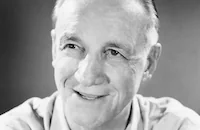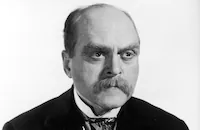Man to Man

Brief Synopsis
Cast & Crew
Allan Dwan
Phillips Holmes
Grant Mitchell
Lucille Powers
Barbara Weeks
Charles Sellon
Film Details
Technical Specs

Synopsis
Michael Bolton, a handsome and popular college athlete, is compelled to leave school when it is discovered that his father, Barber John Bolton, is serving a prison term for murder. Returning to his hometown in Kentucky, Michael gets a job in Jim McCord's bank through the influence of his Uncle Cal after other businessmen have refused to hire him. He falls in love with Emily, the banker's secretary, greatly displeasing Vint, who tries to conceal his feelings. Soon Barber John is paroled on good conduct and is greeted by his old cronies, but Michael, feeling his father has placed a stigma on him, does not go to the station to meet him. When Barber John reopens his shop, he goes to the bank to change a large bill; the same day $2,000 is stolen from the bank. Thinking his father is guilty of the theft, Michael writes a confession to save him, then attempts to escape; but he is brought back in time to hear his father admit to the crime. Emily, however, exposes Vint, who confesses to the theft, thus exonerating both father and son and restoring the latter's faith in his father.

Director

Allan Dwan
Cast

Phillips Holmes

Grant Mitchell
Lucille Powers
Barbara Weeks

Charles Sellon

Dwight Frye
Russell Simpson
Paul Nicholson
Robert E. O'connor
George Marion Sr.
Otis Harlan
James Neill
Johnny Larkins
Crew

Film Details
Technical Specs

Articles
Man to Man (1931) -
By Richard Harland Smith

Man to Man (1931) -
Quotes
Trivia
Notes
Initially reviewed as Barber John's Boy.















